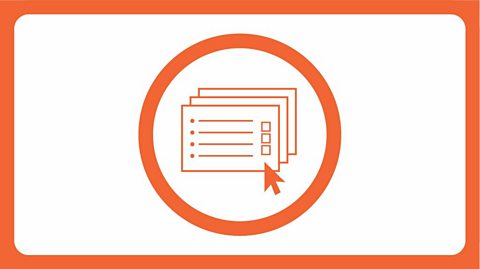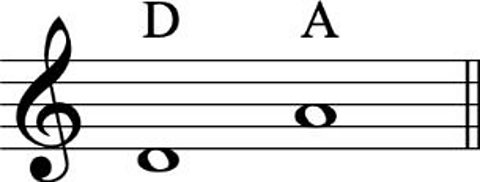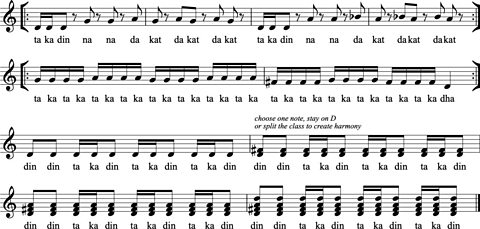For:
- Key Stage 3 in England and Wales
- Third/Fourth Level, S1-S3 in Scotland
- Key Stage 3 in Northern Ireland
You can also download the lesson plans as a PDF with accompanying powerpoint slides.
Written by Rachel Leach
Background
The composer: Ravi SHANKAR (1920вҖ“2012)
- Indian musician and composer
- Known as a sitar maestro
- Brought Indian classical music to a western audience in the 1960s and was a huge influence on George Harrison from the Beatles, US composer Philip Glass and classical violinist Yehudi Menuhin
Explore and download lesson plans for six weeks of learning and activities for Symphony by Ravi Shankar.

The music: Symphony вҖ“ finale (excerpt)
- This 2010 work is a cross between a symphony and a concerto вҖ“ it has four movements like a symphony and a prominent concerto-like solo part for sitar
- Much of the sitar part is improvised
- Uses traditional Indian ragas (modes) rather than major or minor scales and keys
- Towards the end, there is a vocal section which uses Indian drum syllables as text
Trailblazer: Passionate sitar performer Ravi Shankar shared his love of Hindustani classical music by exploring it using the instruments of a large western orchestra
Learning outcomes
Learners will:
- listen and reflect on a piece of orchestral music
- create their own piece of music using instruments and voice
- perform as an ensemble
- learn musical language appropriate to the task
Explore and download powerpoint slides for six weeks of learning and activities for Ravi Shankar вҖ“ Symphony вҖ“ finale (excerpt).

Curriculum checklist:
- listen with increasing discrimination to a wide range of music from great composers and musicians
- play and perform confidently in a range of solo and ensemble contexts using voice, playing instruments fluently and with accuracy and expression
- improvise and compose; and extend and develop musical ideas by drawing on a range of musical structures, genres and traditions
Glossary of music terms used:
- Call and response - a musical conversation. An idea is heard and then repeated by a different section of instruments
- Coda - the вҖҳendingвҖҷ
- Drone - One long, continuous sound (pitched or unpitched) that is present throughout a piece, usually at the bottom of the texture
- Improvise - make it up on the spot!
- Pitched percussion - percussion instruments that can play different pitches вҖ“ xylophones, glockenspiels, chime bars, etc.
- Raga - a special scale used in Indian music, different to the major or minor scales used in western music
- Unison - everyone plays exactly the same thing at the same time
- Unpitched percussion - percussion instruments that can only make a limited number of sounds вҖ“ drums, shakers, woodblocks, tambourines, etc.
Glossary terms can be found in bold throughout.
Resources required:
- instruments
- access to the internet and Google
This scheme of work is plotted out over six weeks. Feel free to adapt it to suit your children and the resources you have available.
The six lessons at a glance
Lesson 1:
Activities:
- Watch the film
- Listen to the performance
- Research and create a short presentation
Curriculum link:
- Listen with increasing discrimination to a wide range of music from great composers and musicians
- Identify and use the interrelated dimensions of music expressively and with increasing sophistication, including use of tonalities, different types of scales and other musical devices
- Develop a deepening understanding of the music that they perform and to which they listen, and its history
Lesson 2:
Activities:
- Learn about drones and ragas
- Improvise a solo
Curriculum link:
- Play and perform confidently in a range of solo and ensemble contexts using voice, playing instruments fluently and with accuracy and expression
- Improvise and compose; and extend and develop musical ideas by drawing on a range of musical structures, genres and traditions
Lesson 3:
Activities:
- Create two-note patterns
- Learn about call and response
Curriculum link:
- Listen with increasing discrimination to a wide range of music from great composers and musicians
- Play and perform confidently in a range of solo and ensemble contexts using voice, playing instruments fluently and with accuracy and expression
- Improvise and compose; and extend and develop musical ideas by drawing on a range of musical structures, genres and traditions
Lesson 4:
Activities:
- Learn about Indian Drum Syllables.
- Learn and develop a vocal section
Curriculum link:
- Listen with increasing discrimination to a wide range of music from great composers and musicians
- Play and perform confidently in a range of solo and ensemble contexts using voice, playing instruments fluently and with accuracy and expression
- Improvise and compose; and extend and develop musical ideas by drawing on a range of musical structures, genres and traditions
Lesson 5:
Activities:
- Create a coda
- Play in unison
- Use syncopation
Curriculum link:
- Listen with increasing discrimination to a wide range of music from great composers and musicians
- Play and perform confidently in a range of solo and ensemble contexts using voice, playing instruments fluently and with accuracy and expression
- Improvise and compose; and extend and develop musical ideas by drawing on a range of musical structures, genres and traditions
Lesson 6:
Activities:
- Structure sections of music into a bigger piece
- Perform in a concert
Curriculum link:
- Play and perform confidently in a range of solo and ensemble contexts using voice, playing instruments fluently and with accuracy and expression
- Improvise and compose; and extend and develop musical ideas by drawing on a range of musical structures, genres and traditions

LESSON 1 - Watching, listening and researching
- Prepare your class
Explain to your class that you are going to begin a six-week music project focusing on a fantastic piece of music by a composer called Ravi Shankar.
He was a musician and composer who made Indian music popular all around the world.
Watch the В鶹ԼЕД Ten Pieces Trailblazer film and have a discussion about what you have seen.
Listening task
Watch the full orchestral performance next and ask your students afterwards to list the instruments they have seen on screen. Write these instruments on the board.
As well as a full list of orchestral instruments your class will have seen a lot of percussion instruments and the sitar, hereвҖҷs the full list:
Explore Ravi і§іуІ№ІФ°мІ№°щвҖҷs Symphony вҖ“ Finale. Learn about Hindustani music, the raga (melody) and tala (rhythm) that shapes the piece, and also the Banjara people who inspired it.
Woodwind: Piccolo, Flute, Oboe, Cor Anglais, Clarinet, Bass Clarinet, Bassoon
Brass: French horns, Trumpet, Trombone, Bass trombone, Tuba
Percussion: Triangle, Bass drum, Cymbal, Whip, Bongos, Woodblock, Xylophone, Marimba
Strings: Harp, Violin, Viola, Cello, Double Bass, Sitar
- Explain
Ravi Shankar was the first musician to add the sitar to the orchestra and it is still very unusual to see it there alongside the violins and cellos, etc.
- Divide your class into groups, or if you have enough computers they could work in pairs or individually. Ask them to research one of the following topic areas:
- The instruments of the orchestra
- What is a symphony?
- What is a concerto?
- The music of India
- Carnatic (south Indian) instruments
- The Sitar
Each team must use the rest of the session to research their topic and prepare a short presentation. Give them a deadline of about ten minutes before the end of the lesson to come back together again.
This would also make a nice homework task.
- FINALLY, encourage each team to share their findings with the rest of the class.
Sitar player Gaurav Mazumdar joins the В鶹ԼЕД Scottish Symphony Orchestra to perform an excerpt from the finale of Ravi і§іуІ№ІФ°мІ№°щвҖҷs Symphony, conducted by Roderick Cox.

LESSON 2 - Ragas, drones and solos
- Warm-up
Ask your students to join you in making a quiet rumble by patting your knees quickly.
Explain that this sound is similar to a drone вҖ“ i.e. a long note played at the bottom of the music. There is a drone almost all the way through the type of Indian music Ravi Shankar played and there is often a drone in his symphony.
Lead the class in performing a vocal drone by asking them to hum a low D вҖ“ this is the pitch of і§іуІ№ІФ°мІ№°щвҖҷs drone and the most important note in his symphony.
і§іуІ№ІФ°мІ№°щвҖҷs music uses a raga вҖ“ this is a scale used in Indian music. The notes of the raga give і§іуІ№ІФ°мІ№°щвҖҷs symphony its special and unique sound. The raga used in і§іуІ№ІФ°мІ№°щвҖҷs piece uses the following notes:

Using whatever pitched instruments you have available, encourage your students to explore this raga and allow a couple of minutes of chaos as everyone gets used to playing these notes.
- In Ravi і§іуІ№ІФ°мІ№°щвҖҷs Symphony the sitar soloist often improvises (i.e. makes it up on the spot). The soloist can play whatever they like as long as they stick to the notes of the raga. Improvised solos using this raga often move around by step. If travelling up the raga the C is replaced by a C#, if travelling downwards it remains C natural. C natural and C# never appear next to one another.

Allow your students more exploration time, encouraging them to experiment with adding in C#s.
- Choose a volunteer to come forward and improvise a solo using the raga while the rest of the class softly plays or sings the drone. When the soloist has finished s/he simply chooses the next soloist and switches places with him/her. Challenge the class to keep the drone going while the soloists switch over and keep going in this way until everyone who wants to has had a go.
You may wish to add some instruments to your drone вҖ“ any instrument that can play a long, low D will work. You could also add a soft rumble from a drum or a shimmer from a shaker. Appoint a conductor to signal changes in volume вҖ“ this will help to keep the drone players engaged.
- FINALLY, end your session by choosing the best three or four soloists and the best combination of instruments for the drone and making a quick version of your piece so far. Make sure that everyone understands the elements you have used today вҖ“ drones, raga and improvised solos.

LESSON 3 - Two-note patterns
- Warm-up
Start with your class sitting in a circle and practise your solos and drone again. Perhaps this time, more students will volunteer to improvise a solo.
- Today, you are only going to use two pitches from the raga вҖ“ D and A:

- Play a short, simple motif using just these two notes and ask the class to copy it back. For example, something like this:

Do this several times back to back changing the motif each time.
Choose a confident musician to lead this and re-do. Explain that this is called 'call and response' and Shankar uses it a lot in his symphony.
Split the class into an even number of groups. Ensure that each group has a varied collection of instruments and a вҖҳpulse-keeperвҖҷ who will play a steady pulse throughout.
Challenge each group to make a short вҖҳcallвҖҷ using just these two notes and any other unpitched sounds they like. The only rule is that the вҖҳcallвҖҷ is simple enough for it to be copied immediately and this time all team members must play the same rhythm at the same time. The вҖҳcallsвҖҷ must be just four beats long вҖ“ the pulse-keepers can help to police this.
Bring the class back together and hear each group one by one. Check that the вҖҳcallвҖҷ is clear and everyone in the group is playing the same thing at the same time. Structure the groups like this:
Group 1: Call
Full class: Response (copies)
Group 2: Call
Full class: Response (copies) etcвҖҰ.
Ask all of the pulse-keepers to join together and play the same pulse steadily, throughout.
- FINALLY, ask your students to suggest an order for this. They might like to think about moving from the quietest call to the loudest or the easiest to the most complex. They can also repeat any patterns that they particularly like. When this order is decided on, write it down on the board carefully and play through it one last time to end the lesson

LESSON 4 - Vocalisation, Indian drum syllables
- Warm-up
TodayвҖҷs lesson features singing so lead your class in a vocal warm-up, such as the one below:
- Raise your left hand and make a nice, long вҖҳhmmmm!вҖҷ sound
- Raise your right hand and make a short, horrible вҖҳurgh!вҖҷ sound
- Ask your students to follow your hand signals, when you raise the left hand they must make the nice sound, when you raise your right hand they make the horrible sound. Try to catch the class out by raising your hands randomly and without a pattern
- Taking it a step further, ask the class to make a high-pitched nice or horrible sound when your hand is held high up and a low-pitched nice or horrible sound when it is held down low
- You can also try sliding your hands up and down as the students slide the sounds up and down in pitch
Another great way to warm up the voice is to sing! You could simply ask the class to sing their current favourite song.
- Shankar uses Indian drum syllables in his symphony. These are short sounds used to teach and remember rhythms in South Indian Carnatic music. Shankar makes an exciting melody out of them and places it near the end of his piece.
HereвҖҷs a simplified version of і§іуІ№ІФ°мІ№°щвҖҷs melody вҖ“

Using call and response, teach it to the class. They can also play it with the вҖҳpulse-keepersвҖҷ from the last lesson to provide a steady pulse throughout.
- Encourage the class to use this melody as the basis for their own vocal section.For example, they may:
- Change the order of the phrases
- Repeat phrases more than once
- Experiment with the structure
- Create their own phrases
If creating their own phrases, they must stick to the notes and sounds used above. Here are some useful cells:

- FINALLY, bring all of their ideas together to make one vocal section featuring:
- Singing (and/or played on instruments)
- Pulse
- Drone (on D, or a quiet rumble)
Make sure you record or write down what you have created this lesson the order of events and who played what.

LESSON 5 - Massive Coda
- Explain
Ravi Shankar ends his piece with a short exciting section called a coda. You might want to listen to this bit again, itвҖҷs the last two minutes of the piece, after the singing.
- і§іуІ№ІФ°мІ№°щвҖҷscodais made up of the following ingredients:
- Raga running up and down in unison
- Pulse and ostinatos, syncopation
Spilt your class into two groups вҖ“ pitched players and unpitched players.
Set the following tasks:
Pitched group: create a short section that wanders up and down the notes of the raga. It doesnвҖҷt have to move all the way up and down, it can вҖҳget stuckвҖҷ in the middle. It also doesnвҖҷt have to be continuous вҖ“ they may leave gaps. All the players must be playing in unison, i.e. the same thing at the same time
Unpitched group: This section must feature a constant, steady pulse. Ostinatos (repeated rhythmic patterns), syncopation (off-beats or rhythms that use off-beats) and unexpected sound effects may be added. For example, the group might want to add some вҖҳsplashyвҖҷ sound effects such as a cymbal crash or a short rumble but these sounds must only appear occasionally and unexpectedly
Possibly the best way to achieve this is to just allow the unpitched players to вҖҳjamвҖҷ. Start with the pulse, encourage players to join in one by one adding whatever they like on top of the pulse. Eventually the pulse can start to develop too.
Bring the groups back together and hear each one separately. Ask the class to suggest a way to put these two sections together to make one big coda. Should they begin at the same time or staggered? Can you adapt the speed of the raga to fit with the pulse? Try out a few options before deciding on the best.
Add in some more call and response вҖ“ Shankar creates moments of call and response between the raga players and percussionists in his coda. When a phrase of the raga ends, he fills the gap with something percussive (for example a series of вҖҳstabsвҖҷ). Encourage your musicians to fill any gaps in a similar way and refer to the recording for inspiration
FINALLY, practise your coda until it is neat and everyone knows what they are doing. Write it down or record it.

LESSON 6 - Put it all together!
- Talk through all the elements you have made so far:
- Improvised solos with drone (lesson 2)
- Call and response two-note patterns (lesson 3)
- Vocal section (lesson 4)
- Massive coda (lesson 5)
Get the instruments out and split back into groups. Give the class just five minutes to remember any group sections before staggering through full class sections one by one.
Ask your students to suggest an order for these sections so that they run seamlessly together and sound like one piece. Ravi і§іуІ№ІФ°мІ№°щвҖҷs piece uses the order above, but yours doesnвҖҷt have to!
Rehearse your full piece fixing any issues that might arise until everyone knows what they are doing and you are ready for a performance.
FINALLY, invite another class to hear your music or record it and listen back critically.

TAKING IT FURTHER - Cross-curricular activities
MUSIC: Listen to traditional South Indian Carnatic music and see how it compares and contrasts with Ravi і§іуІ№ІФ°мІ№°щвҖҷs Symphony. Listen to how Ravi Shankar inspired the Beatles and American composer Philip Glass.
BE A TRAILBLAZER: Ravi Shankar brought his style of music to the symphony orchestra and created something new. Combine your favourite style of music with someone elseвҖҷs or combine your style with the rules of raga or the symphony.
DANCE: Indian music is often danced to. Record your new piece and create a dance to go with it. Or alternatively, choreograph a dance to Ravi і§іуІ№ІФ°мІ№°щвҖҷs piece.
UPLOAD: Show us what youвҖҷve created! Submit your creative responses using our Uploader for a chance to be featured on the Ten Pieces website.
Upload and showcase your creative responses
Upload your creative responses to the Ten Pieces repertoire for your chance to feature in the Ten Pieces creative showcase.
